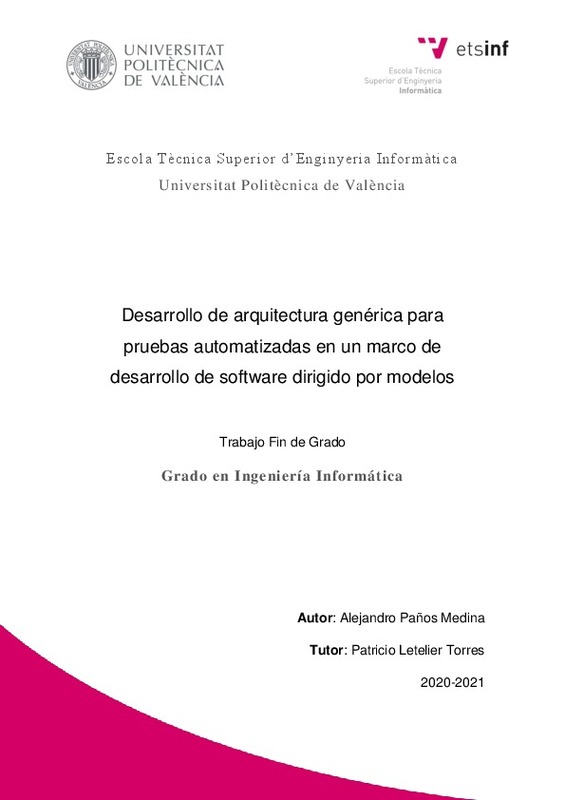|
Resumen:
|
[ES] En el desarrollo de software, un buen sistema de pruebas es tan importante como el
desarrollo del propio software. Mantener una batería de pruebas efectiva, fiable y
actualizada no es una tarea fácil. Debido a la ...[+]
[ES] En el desarrollo de software, un buen sistema de pruebas es tan importante como el
desarrollo del propio software. Mantener una batería de pruebas efectiva, fiable y
actualizada no es una tarea fácil. Debido a la constante evolución del mundo de la
industria del software nos encontramos con el problema que tendremos que elegir una
tecnología concreta para llevar a cabo un proyecto y nunca se nos garantiza que esa
tecnología posteriormente no cambie. Por multitud de causas nos podemos ver
obligados a migrar de tecnología de desarrollo, por ejemplo, porque no se adapta a
nuevas necesidades o simplemente porque deja de tener soporte, con todo el trabajo
de migración que esto conlleva. La motivación de este TFG surgió en un contexto de
desarrollo de software dirigido por modelos, basado en la generación automática de
código a partir de modelos, utilizando la tecnología DSL-Tools de Microsoft. Esta
tecnología permite diseñar un lenguaje específico de dominio y utilizarlo para generar
modelos basados en ese lenguaje. Una vez creados esos modelos, pueden utilizarse
para generar código automáticamente a partir de ellos. En este contexto había que
establecer cómo realizar las pruebas del código generado de una forma que estuviese
alineada con el enfoque de generación automática de código y que facilitara un posible
cambio de tecnología de desarrollo del producto o la propia herramienta utilizada para
dar soporte a las pruebas automatizadas. Así, en este TFG se aborda ese desafío
diseñando e implementando una batería de pruebas que utiliza una estructura genérica.
Esta puede reutilizarse, permitiendo cambiar de herramienta de pruebas sin la
necesidad de reescribir las pruebas del producto desde cero, siendo solo sea necesario
adaptar los mecanismos propios de la nueva herramienta a la estructura existente,
ahorrando mucho tiempo y recursos.
[-]
[EN] Related to software development, a reliable test suite is as much important as the
software itself. To maintain an effective, reliable and updated software testing suite is
not an easy task. Due to the continuous ...[+]
[EN] Related to software development, a reliable test suite is as much important as the
software itself. To maintain an effective, reliable and updated software testing suite is
not an easy task. Due to the continuous evolution of the software industry, it’s important
to choose wisely which tool we are going to use in a project, and nothing guarantees us
that is not going to change. There are a lot of reasons to force us to migrate the project
to another tool because it does not adapt to new needs or simply because it has no
longer support, with all the effort that this entails. This paper born in a model driven
automated software development context, based in model-based automated code
generation using the Microsoft’s DSL-Tools technology. This technology allows to design
a domain specific language and use it to generate models based on it. Once the models
are created, they can be used to generate code automatically from them. Using this
context, it was necessary to determinate how to perform the generated code tests in a
way that was aligned with the automated generation code approach and facilitates a
possible change in the development product technology or the tool used to support the
automated tests. This paper tries to approach that challenge designing and implementing
a tests suite that uses a generic structure. It can be reused allowing to change the testing
tool without needing to rewrite every single test from scratch, only being needed to adapt
the specific tool mechanisms to the existing structure, saving time and resources.
[-]
|







